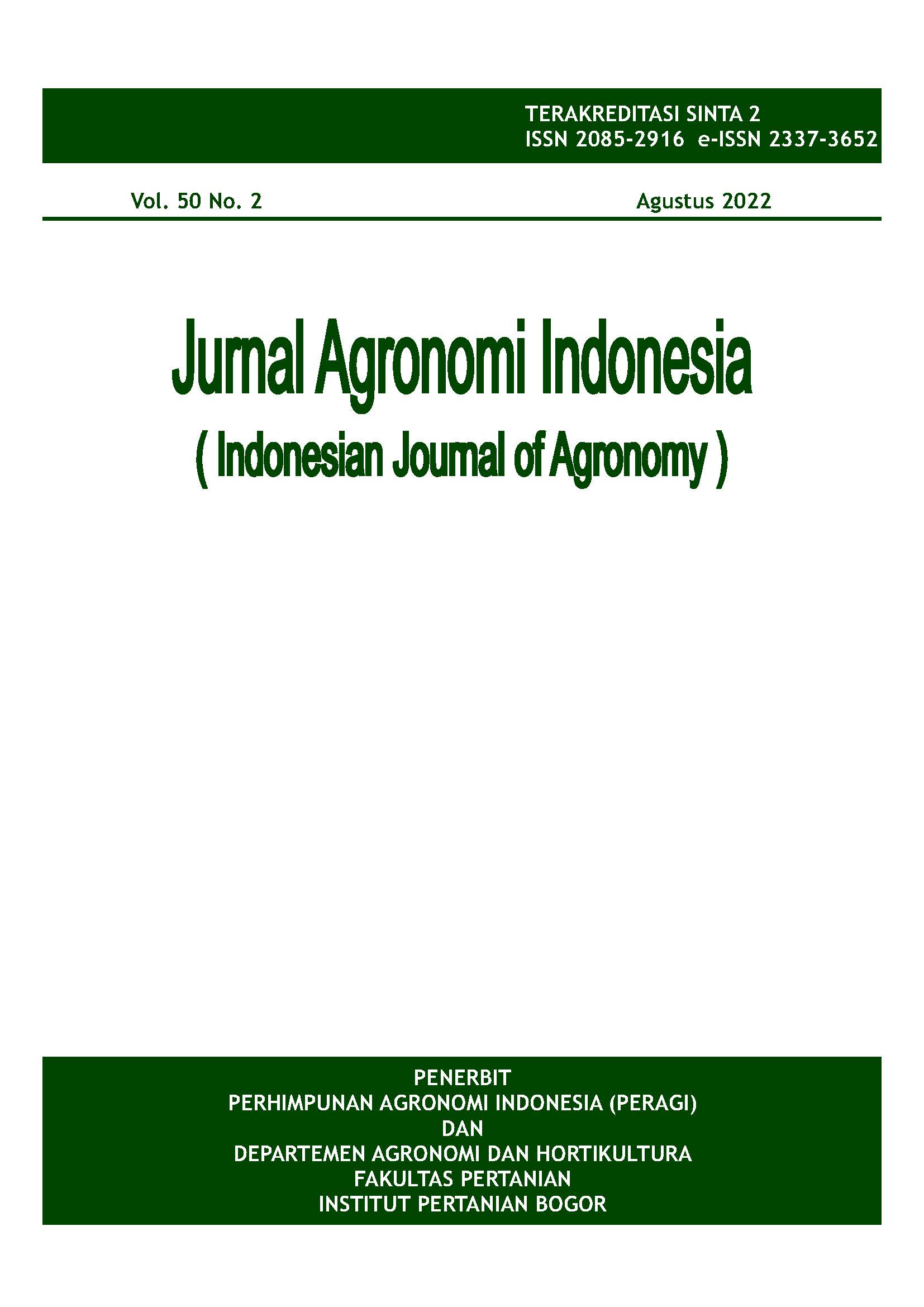Application of Several Compositions of Organic Mulch Sheet on Shallot (Allium ascalonicum L.) Cultivation
Abstract
The increase in shallot production can be achieved by mulching. Plastic mulch and plant residues that are commonly applied still have shortcomings, so innovation is needed through the formulation of organic mulch sheets (OMS). This study aimed to examine the effect of the composition of OMS on the growth and biomass of shallot. The research was conducted from December 2019 to February 2020 at the UMM Experimental Field, Junrejo, Batu, East Java. Materials were shallot bulb and raw materials of OMS (water hyacinth, banana stem, and coconut husk). The experiment used a simple RCBD with 6 treatments, namely 1 control (without mulch) and 5 treatments with different OMS compositions (percentage of water hyacinth (EG), banana stem (PP), and coconut husk (SK)) i.e., M1 (40%EG: 40%PP: 20%SK), M2 (30%EG: 50%PP: 20%SK), M3 (50%EG: 40%PP: 10%SK), M4 (60%EG: 30%PP: 10%SK) dan M5 (40%EG: 50%PP: 10%SK). The growth and biomass data were analyzed using ANOVA, mean comparison using Tukey’s honestly significant difference (HSD) test), and the calculation of AGR and CGR values. The composition of OMS made from water hyacinth, banana stem, and coconut husk had a significant effect on plant height, number of leaves, stem diameter, and number of tillers at the end of observation. The OMS application increased the biomass (total fresh weight and dry weight) significantly at harvest. The OMS made of 40% water hyacinth, 40% banana stem, and 20% coconut husk showed higher growth and plant biomass as well as higher AGR and CGR values than other OMS treatments.
Keywords: average growth rate, biodegradable, biomassa, crop growth rate













